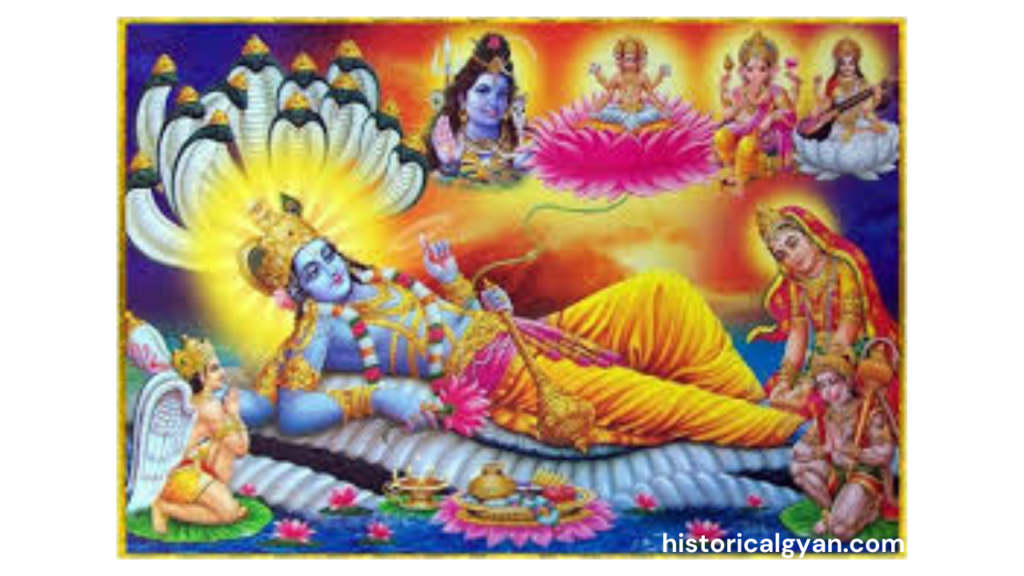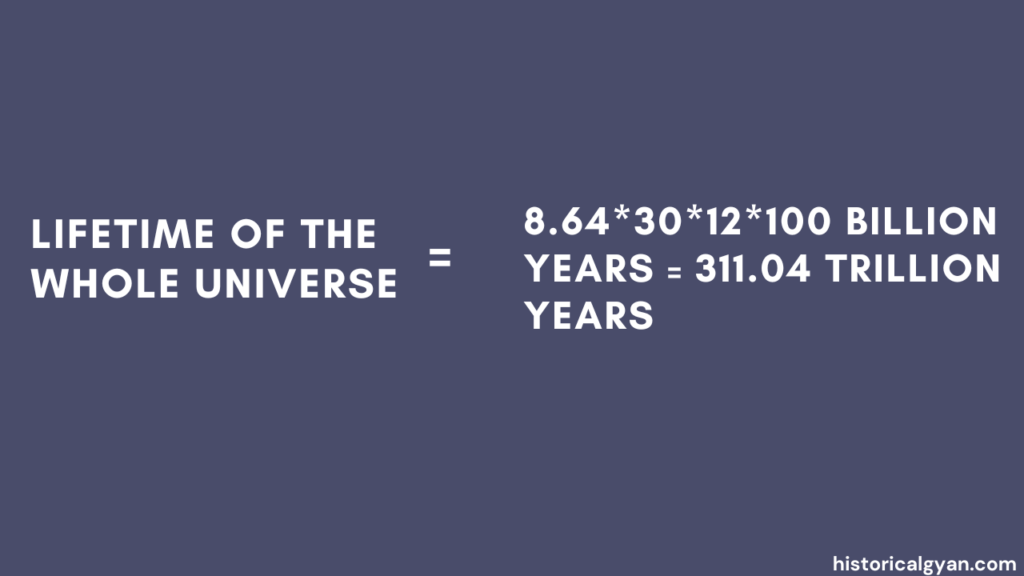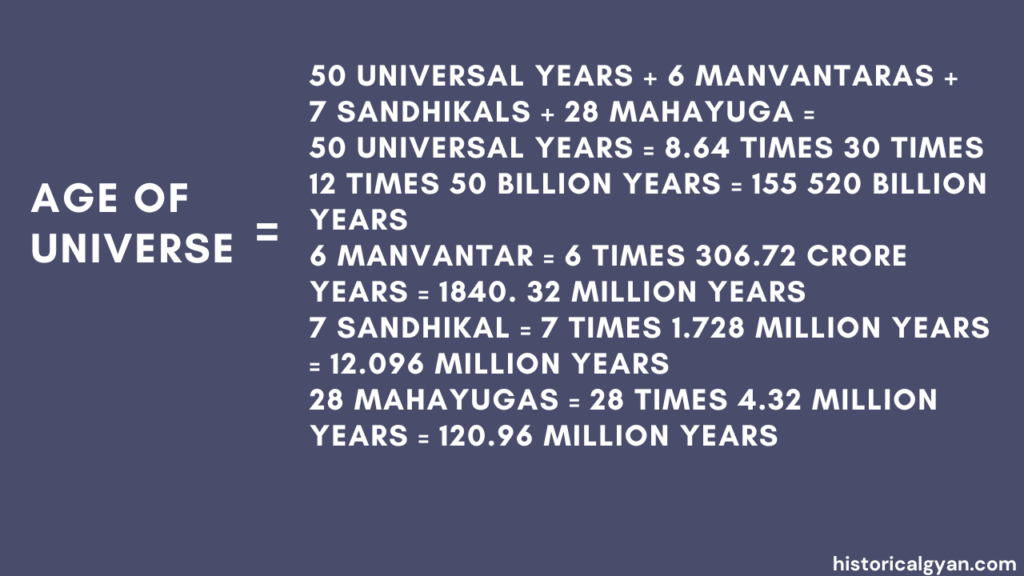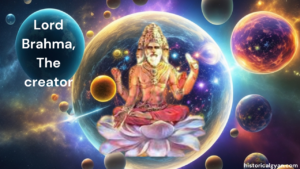Universe creation theories in Hinduism
Universe is such a mystery that mankind is always surprised to hear, how it was created and who is responsible for its creation in Hinduism? There are many theories about how the universe was created in the early period, such as a look at the creation of universe in Hinduism, some of them imply that the universe is not a single entity.
According to them the number of universes are infinite which are constantly being created and destroyed, in other words we live in a universe that belongs to the multiverse, a universe that will eventually perish, but the multiverse is based on the god Vishnu of Hinduism. live,
According Universe creation theories in Hinduism. they belief Lord Vishnu is the embodiment of diversity, before the creation of the universe he was sleeping on his bed which is a huge snake with thousands of hoods in the cosmic ocean of all causes, the universe was created in three roles, The creator, the maintainer and the destroyer, Lord Vishnu is the preserver, Lord Brahma the creator. Lord Shiva is the destroyer,
The Mythical Birth of the Universe| Hindu cosmology
According Universe creation theories in Hinduism. The universe was created by the actions of Lord Vishnu, when he was sleeping a lotus emerged from his navel, Brahma was in the center of the flower, the luda stem of the flower represents the creation of the universe, while Brahma represents the creator of the universe.

Vishnu’s Breath: The Cosmic Symphony of Creation and Dissolution: Multiverse in Hinduism
The time Lord Vishnu inhales is equal to the period between the creation of one universe and the end of another, when he exhales thousands of universes come into existence and in each a new Brahma is born, But when Lord Vishnu breathes, the entire universe is absorbed into it. and Brahma dies.
Lord Brahma is the representative of the universe we live in. He is the source of life in all universes. And Brahmaji is only responsible for the neutral.
According Universe creation theories in Hinduism. Lord Brahma, the creator, shapes the material universe by infusing it with diverse life forms. He weaves the intricate fabric of existence, sculpting each species and guiding its journey through time. Brahma’s role underscores the transient nature of the physical world, as each universe he crafts is inherently temporary.
Vishnu: Embodiment of Eternal Diversity

In contrast to the ephemeral creations of Brahma, Lord Vishnu personifies eternal diversity that transcends the confines of time and space. Vishnu serves as the eternal source of life across all universes, embodying the unchanging essence that endures amid the cycles of creation and dissolution.
The Divine Choreography: Brahma and Vishnu’s Roles
| Deity | Role |
|---|---|
| Lord Brahma | Brahma, as the cosmic architect, shapes the tapestry of life forms and landscapes, infusing existence with diversity and vibrancy in the grand dance of creation. |
| Lord Vishnu | Vishnu embodies eternal diversity, ensuring life’s vitality and continuity across universes, serving as the source of eternal cosmic existence. |
Brahma represents our scientific physical universes, while Vishnu represents the eternal diversity that exists forever without beginning or end. The universe established by Brahma is not static, in fact it varies greatly.
Yes, Brahma lives only for 100 year after that he dies. And then the new universe will be born.
Measurement Brahma lives
Now let’s talk about time measurement Brahma lives for 100 years and each year of Brahma has 360 days and we are currently on the first day of the 51st year of his reign
During the day Brahma creates life and during the night all the life created by him is absorbed back into him, so we exist only for one day of Brahma. Presently this day is the first day of his 51st year.
Brahma’s life
| 4 Yuga (Styaya, Treta, Dwapara, Kalyuga = | 1 Mahayuga |
| 71 Mahayuga = | 1 Manvanta |
| 14 Manvantaras (7+7) = | 1 Day of Brahma |
| Such 30 days = | 1 Month of Brahma |
| Such 12 Months = | 1 year of Brahma |
| Such 100 Years = | Brahma’s life or End of Creation |
Now we will understand all these time calculations in detail.
Yugas: Yugas and cosmic epochs in Hinduism
Understand yuga as a unit of time, measured in thousands to millions of years, Vishnu Purana and ancient Hindu text have details about these yuga measurements, a mahayuga is made up of four sub-yugas which are proportionally is delivered. In Mahayuga four ratio three ratio two ratio is one;
Kaliyuga is the shortest era. It lasts for 432 thousand solar years and is followed by Dwapara Yuga which is 864 thousand which is twice as long as Kaliyuga. Then there is Tretayuga which is of 12 lakh 96 thousand years and lastly Satyuga which is of 17 lakh 28 thousand years, in this way altogether four yugas on earth become one Mahayuga. Which lasts for a total of 4.32 million years.
| Yuga | Duration | Proportion to Mahayuga |
|---|---|---|
| Kaliyuga | 432,000 solar years | 1/4 |
| Dwapara Yuga | 864,000 solar years | 1/2 |
| Tretayuga | 1,296,000 solar years | 3/4 |
| Satyuga | 1,728,000 solar years | 1 |
Mahayuga Duration: 4.32 million years
A Mahayuga is composed of four sub-yugas, and their durations are in the ratio of 4:3:2:1 respectively. The yugas in a Mahayuga are Kaliyuga, Dwapara Yuga, Tretayuga, and Satyuga.
Manvantar
In ancient Indian Hindu scriptures, the next major unit of time after the Mahayuga is called the Manvantara, at the beginning of which new life forms are created and at the end of which those life forms are destroyed. This is how the circle of life goes on.
Manvantara: The Weaver of Life’s Tapestry
| Concept | Cycle |
|---|---|
| Manvantara | In this cosmic cycle, life forms emerge, evolve, and ultimately dissolve, sustaining the eternal rhythm of existence through 71 Mahayugas or 306.72 million years. |
It is said that a Manvanta lasts for 71 Mahayuga or 71 times 4.32 million years, that is a total of about 306.72 million years, according to these ancient texts all life on earth will eventually perish after 306.72 million years of evolution,
Interestingly, about 252 million years ago Earth experienced its greatest mass extinction event, wiping out most species on Earth, including about 90 percent to 96 percent of insects. This was the only period of mass extinction of insects on Earth. After each mass extinction of life forms there is a period of recovery called the epoch.
The Symphony of Extinction and Recovery
| Phases | Duration |
|---|---|
| Mass Extinction | Earth’s history bears witness to mass extinctions, leading to epochs of recovery, where life resurfaces from the ashes, reflecting the resilience of existence. |
| Epoch of Recovery | This recovery phase, an epoch lasting 1.7 to 8 million years, highlights life’s capacity to regenerate and adapt following catastrophic events. |

This period lasts for one Satyayuga or 1.7 to 8 million years, according to the latest estimates of modern science it is believed that it took about 10 million years for life on earth to recover after the penultimate Triassic extinction event,

As you can see, it took our planet 10 million years to get back on its feet after experiencing the biggest mass extinction in history.
Kalpa and Mahakalpa: Cosmic time scales
Like our days on earth, there is a day in the universe called a kalpa, the time period of a kalpa is considered to be equal to 14 manvantaras and their sandhikals. Thus there are 14 Manvantaras and 15 Sandhikals in a Kalpa. During the sandhikal before the first manvantara, no life has yet evolved.
1 Kalpa = 4 * 306.72 million years + 15 * 1.728 million years
1 kalpa = 4.32 billion years
One Kalpa is equal to 14 times 306.72 million years and multiplying 15 by 1.728 million years makes one Kalpa equal to 4.32 billion years.
Mahakalp: The Cosmic Lifecycle
One unit of the universal scale is advanced on earth with an equal number of days and years so that a month on the universal scale is 30 kalpas i.e. 30 universal days and a year on the universal scale is 12 such universal months. It enables life forms to rise and fall according to their earned karma. Hundred years on the universal scale is defined as the life span of the universe, it is called Mahakalpa.
Mahakalp: The Cosmic Lifecycle
| Cosmic Rhythm | Duration |
|---|---|
| Universal Scale | A universal month contains 30 Kalpas, and a universal year comprises 12 such months, orchestrating the rise and fall of life forms in alignment with their karma. |
| Mahakalpa | The pinnacle of cosmic rhythm, Mahakalpa spans 100 universal years, epitomizing the universe’s lifecycle, from inception to eventual dissolution. |
The universe is said to end at the end of its hundred years of age

Lifetime of the whole universe = 8.64*30*12*100 billion years = 311.04 trillion years
The life of brahma (time dilation)is 100 divine years called Mahakalpa
Thus According Universe creation theories in Hinduism. the lifetime of the entire universe is 8.64 x 30 x 12 x 100 billion years, which is approximately 311.04 trillion years in total.
Ancient Indian texts say that our universe is currently on the first day of its 51st year, on this day we are in Kaliyuga, the 28th Mahayuga of the seventh Manvantara. So we come again to the calculations according to ancient Indian texts.
Age of universe
| Temporal Scale | Duration |
|---|---|
| Hindu Texts Estimate | According to ancient Hindu texts, the universe’s lifetime extends over 8.64 × 30 × 12 × 100 billion years, an astonishing 311.04 trillion years. |
| Modern Scientific Insight | In contrast, modern science proposes the universe’s age at approximately 13.79 billion years, underscoring the vast chasm between ancient wisdom and current knowledge. |

50 Universal Years + 6 Manvantaras + 7 Sandhikals + 28 Mahayuga =
50 universal years = 8.64 times 30 times 12 times 50 billion years = 155 520 billion years
6 Manvantar = 6 times 306.72 crore years = 1840. 32 million years
7 sandhikal = 7 times 1.728 million years = 12.096 million years
28 Mahayugas = 28 times 4.32 million years = 120.96 million years
(Age of the universe 50 universal years, 6 manvantaras, 7 sandhikals, 28 mahayugas, equal to 50 universal years, equal to 8.64 times 30 times 12 times 50 billion years equal to 155 520 billion years 6 manvantaras six times 306.72 million years equal one hundred and 1840 decimal three two Crore year seven Samadhika seven times one point seven two eight crore year equals twelve point zero nine six million year 28 Mahayuga 28 multiplied by 4. 32 million years is equal to 120.96 million years,)
Ancient Texts vs. Modern Science: Age of the Universe
Hence according to Hinduism’s Theories on Universe Creation in ancient Hindu texts the age of the universe is 157.49 trillion years
Modern science tells us the universe is about 13.79 billion years old, although ancient Indian texts predict a much longer timeline. Ancient Indian texts say the age of the universe is about 311 trillion years. This video is a great way to appreciate that large scale of time. There is an effort on which the ancient Indians were working. We do not find any such ancient civilization which talks in terms of counting billions or trillions of years.
American cosmologist Carl Sagan states
As noted American cosmologist Carl Sagan states in his book Cosmos, Hinduism is the only one of the world’s great religions devoted to the idea that the universe itself undergoes a vast, virtually infinite number of deaths and rebirths. It is the only is a religion in which time scales correspond to modern scientific cosmology. Its cycle lasts from our normal day and night to one day and night of Brahma, which is 8.64 billion years longer than the age of Earth or the Sun and about half the time since the Big Bang.
The facts of time dilation are found in ancient Puranas



